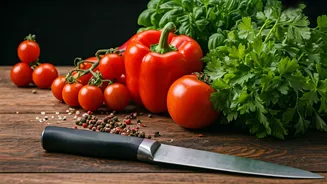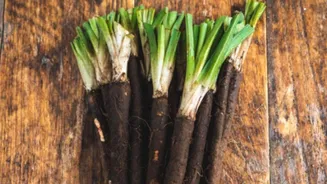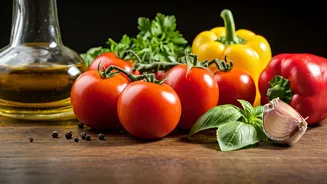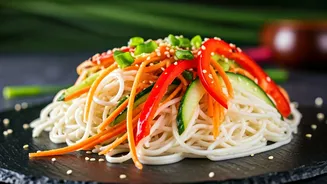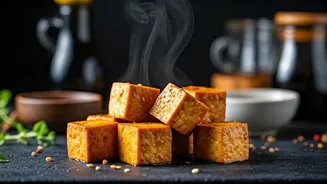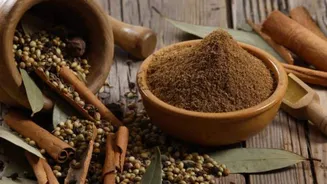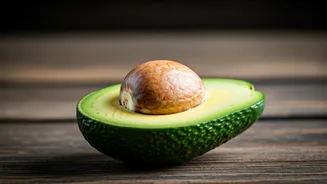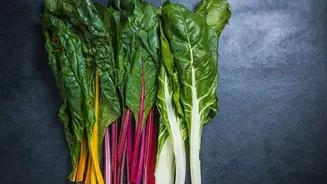Selecting Quality Ingredients
The foundation of any great meal rests on the quality of its ingredients. Start by carefully selecting fresh produce, which often brings vibrant flavors
and textures to the dish. When choosing vegetables, look for firmness, vibrant colors, and the absence of bruises or wilting. Opt for ripe fruits, judging their aroma and feel – they should yield slightly to gentle pressure. For meats and seafood, ensure they are fresh and sourced from a trusted provider. Freshness is key: consider the color, smell, and appearance, as these indicate quality. Choosing the right ingredients is more than just following a recipe; it's about building a culinary experience.
Preparing for Cooking
Preparation is key to unlocking the full potential of your ingredients. Proper preparation helps maintain the ingredients' integrity and enhances their natural flavors. This may involve washing and chopping vegetables to the right size, this will guarantee even cooking. Meats and seafood should be prepared according to the recipe instructions, which could include marinating, trimming, or portioning. For grains and legumes, rinsing and soaking can improve texture and reduce cooking time. Spices and herbs, are also to be prepared for cooking. If they are dried, crush or grind them to release their aromas. With fresh herbs, chop or tear them just before adding them to your dish to preserve their delicate flavors. Taking the time to prepare ingredients properly ensures that your cooking experience is enhanced.
Understanding Flavor Profiles
Each ingredient carries its own flavor profile, contributing to the overall taste of the dish. Understanding how flavors interact with each other is fundamental to creating balanced and delicious meals. For instance, the sweetness of carrots can complement the acidity of tomatoes, while the earthiness of mushrooms contrasts with the sharpness of onions. Consider the use of herbs and spices to intensify or adjust flavors. For instance, basil and oregano can enhance the freshness and brightness of a tomato-based sauce, while cumin and coriander can add warmth and complexity to a curry. Understanding these flavor relationships lets you make informed decisions when cooking.
Beans and Greens Polenta
The Beans and Greens Polenta Bake is a testament to the power of well-chosen ingredients. Polenta, with its creamy texture, offers a base for a range of flavorful add-ins. Beans, rich in protein and fiber, contribute a hearty element. Greens, such as spinach or kale, add a boost of nutrients and a slight bitterness that balances the sweetness of the other components. When combined, these ingredients produce a nourishing and delicious dish. The beauty of this recipe lies in the interplay of textures and flavors. As the dish bakes, the polenta becomes golden and slightly crisp, while the greens wilt and soften, absorbing the flavors of the beans and spices. This combination can be a fulfilling and wholesome meal.
Recipe Notes and Tips
Recipe notes and cooking tips are invaluable for enhancing your cooking journey. These notes frequently offer insights into substitutions, providing alternatives when certain ingredients are unavailable or if you have dietary restrictions. Tips often address the optimal cooking methods for specific ingredients, such as how to prevent vegetables from becoming mushy or how to ensure meat is cooked evenly. For example, when creating the Beans and Greens Polenta Bake, a recipe note might suggest using vegetable broth in place of water to increase the dish's flavor. These added tips can significantly improve your cooking success. They can elevate your cooking experience.
Related Recipes & Guides
Exploring related recipes and cooking guides expands your culinary horizons. This can expose you to different cooking techniques and combinations of ingredients. You can discover new dishes, and experiment with similar flavors by trying similar recipes. For instance, the Beans and Greens Polenta Bake could be related to other polenta dishes or recipes including beans and greens. Reading cooking guides provides valuable information, such as how to roast vegetables, how to build a flavorful sauce, or how to season meat. By learning from related recipes and cooking guides, you build your cooking confidence and unlock a broad range of culinary options.
